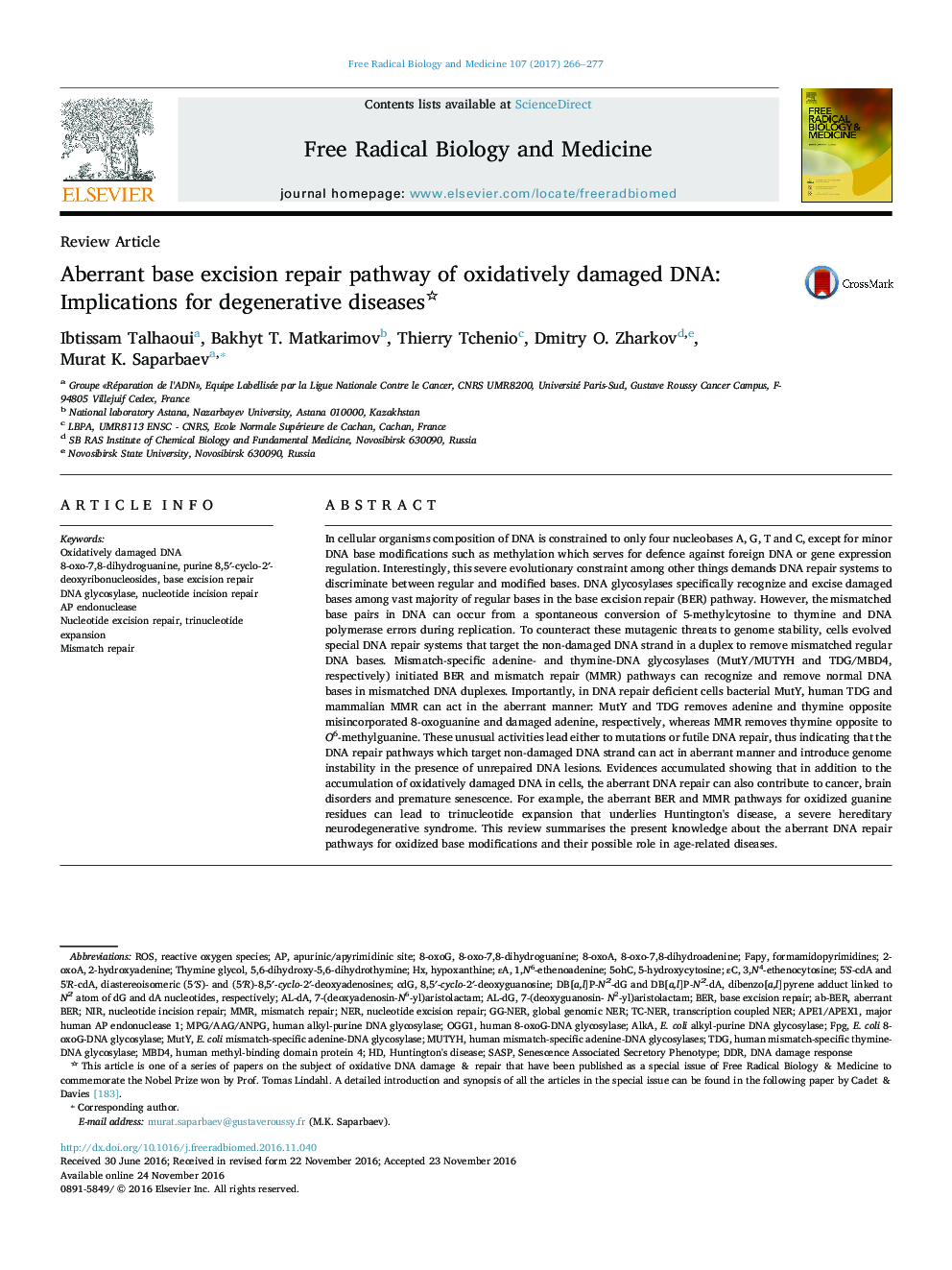| کد مقاله | کد نشریه | سال انتشار | مقاله انگلیسی | نسخه تمام متن |
|---|---|---|---|---|
| 5501824 | 1534936 | 2017 | 12 صفحه PDF | دانلود رایگان |

- DNA repair can remove a non-substrate base in damaged duplex in aberrant manner.
- Accumulation of DNA lesions might expose non-damaged DNA strand to aberrant repair.
- DNA glycosylases are optimized to prevent excision only from Watson-Crick pairs.
- Aberrant removal of a regular nucleotide can lead to multiple rounds of futile repair.
- Excision of a regular DNA base opposite to lesion results in mutagenic repair.
- Aging may be linked to the accumulation of mutations induced by aberrant DNA repair.
In cellular organisms composition of DNA is constrained to only four nucleobases A, G, T and C, except for minor DNA base modifications such as methylation which serves for defence against foreign DNA or gene expression regulation. Interestingly, this severe evolutionary constraint among other things demands DNA repair systems to discriminate between regular and modified bases. DNA glycosylases specifically recognize and excise damaged bases among vast majority of regular bases in the base excision repair (BER) pathway. However, the mismatched base pairs in DNA can occur from a spontaneous conversion of 5-methylcytosine to thymine and DNA polymerase errors during replication. To counteract these mutagenic threats to genome stability, cells evolved special DNA repair systems that target the non-damaged DNA strand in a duplex to remove mismatched regular DNA bases. Mismatch-specific adenine- and thymine-DNA glycosylases (MutY/MUTYH and TDG/MBD4, respectively) initiated BER and mismatch repair (MMR) pathways can recognize and remove normal DNA bases in mismatched DNA duplexes. Importantly, in DNA repair deficient cells bacterial MutY, human TDG and mammalian MMR can act in the aberrant manner: MutY and TDG removes adenine and thymine opposite misincorporated 8-oxoguanine and damaged adenine, respectively, whereas MMR removes thymine opposite to O6-methylguanine. These unusual activities lead either to mutations or futile DNA repair, thus indicating that the DNA repair pathways which target non-damaged DNA strand can act in aberrant manner and introduce genome instability in the presence of unrepaired DNA lesions. Evidences accumulated showing that in addition to the accumulation of oxidatively damaged DNA in cells, the aberrant DNA repair can also contribute to cancer, brain disorders and premature senescence. For example, the aberrant BER and MMR pathways for oxidized guanine residues can lead to trinucleotide expansion that underlies Huntington's disease, a severe hereditary neurodegenerative syndrome. This review summarises the present knowledge about the aberrant DNA repair pathways for oxidized base modifications and their possible role in age-related diseases.
310
Journal: Free Radical Biology and Medicine - Volume 107, June 2017, Pages 266-277